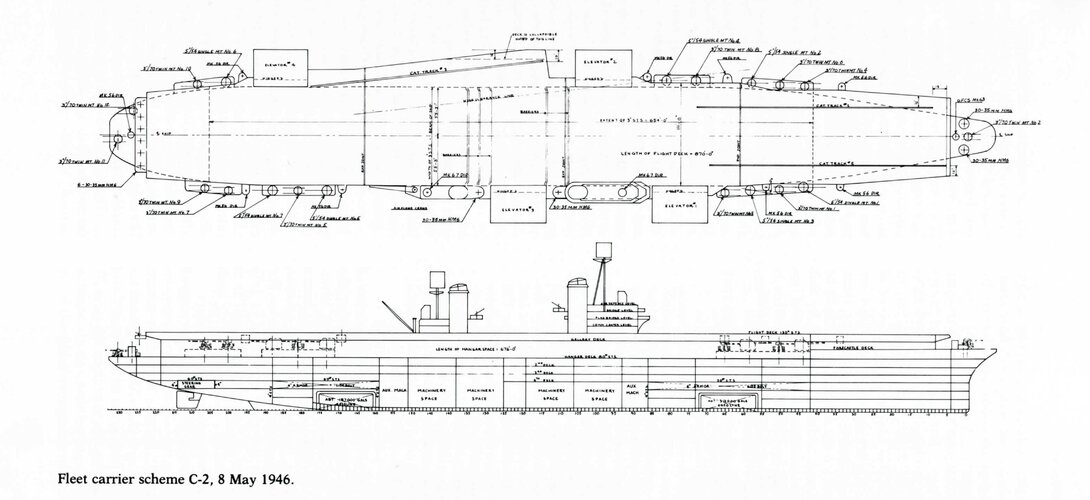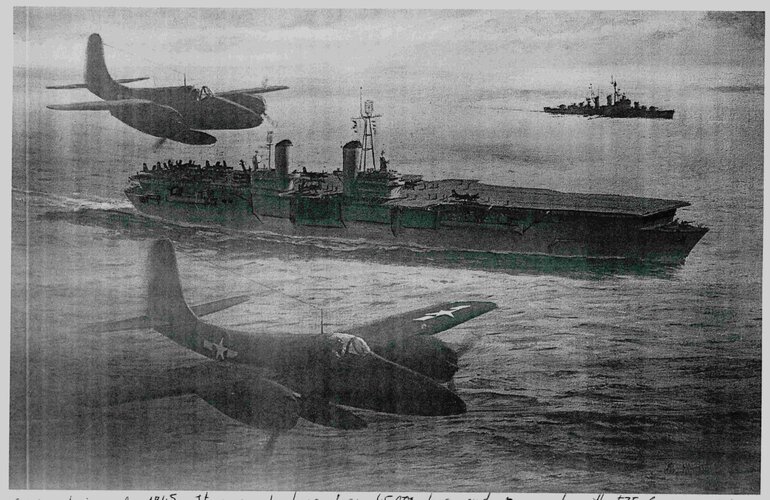- Joined
- 22 January 2006
- Messages
- 4,216
- Reaction score
- 2,018
A comprehensive source is Norman Friedman's "U.S. Aircraft Carriers".
"By 1945, the Essex class was considered unsuited to the new generation of naval aircraft. The 1945 fleet carrier was to have solved such problems in a hull suited to mass production". Also incorporating those learned from WWII experiences.
The Midway design started as an armored Essex. In pre-WWII thinking that was found an improvement. The addition of armour, demanded an increase in size in order to keep the same number of aircraft. At the end, Midway class was found oversized and less performant than Essex class for WWII needs.
However, the basis for the Essex replacement was to start from the Midway design without armour. The definitive iteration was Scheme C-2, 8 May 1946. Once it was ready, that project and the parallel developed United States Class were cancelled in preference for a new combined design from both into what became the Forrestal Class.
I have attached Friedman's book illustration.And a second attachment, an artistic rendering published in the back cover of Warship International Vol. 28, No. 3 1991. This is published by the International Naval Research Organization.
I scanned it from a photocopy made almost 30 years ago, that's why it looks awful.
"By 1945, the Essex class was considered unsuited to the new generation of naval aircraft. The 1945 fleet carrier was to have solved such problems in a hull suited to mass production". Also incorporating those learned from WWII experiences.
The Midway design started as an armored Essex. In pre-WWII thinking that was found an improvement. The addition of armour, demanded an increase in size in order to keep the same number of aircraft. At the end, Midway class was found oversized and less performant than Essex class for WWII needs.
However, the basis for the Essex replacement was to start from the Midway design without armour. The definitive iteration was Scheme C-2, 8 May 1946. Once it was ready, that project and the parallel developed United States Class were cancelled in preference for a new combined design from both into what became the Forrestal Class.
I have attached Friedman's book illustration.And a second attachment, an artistic rendering published in the back cover of Warship International Vol. 28, No. 3 1991. This is published by the International Naval Research Organization.
I scanned it from a photocopy made almost 30 years ago, that's why it looks awful.


